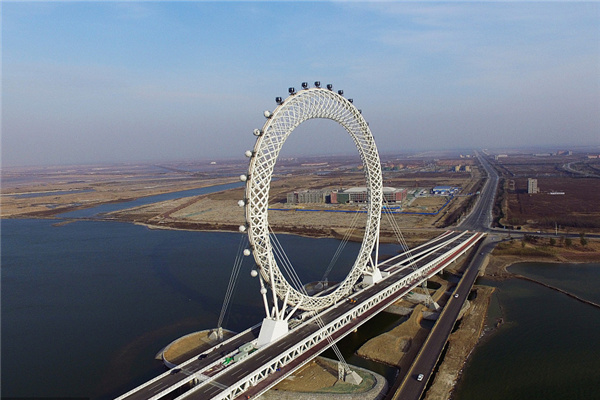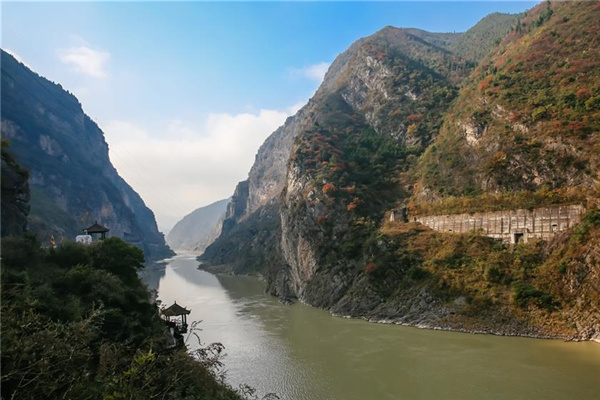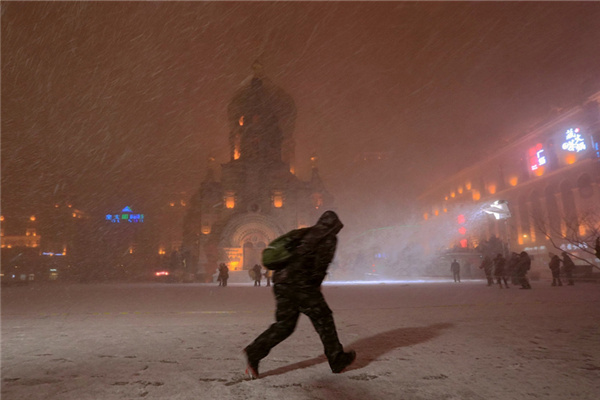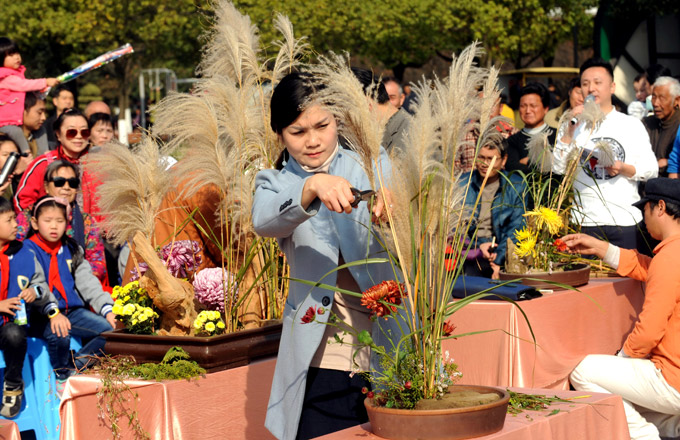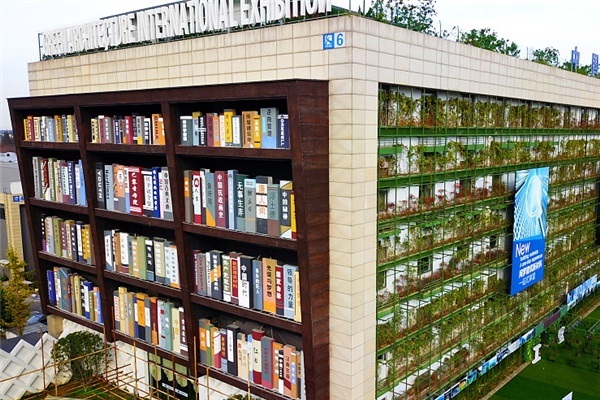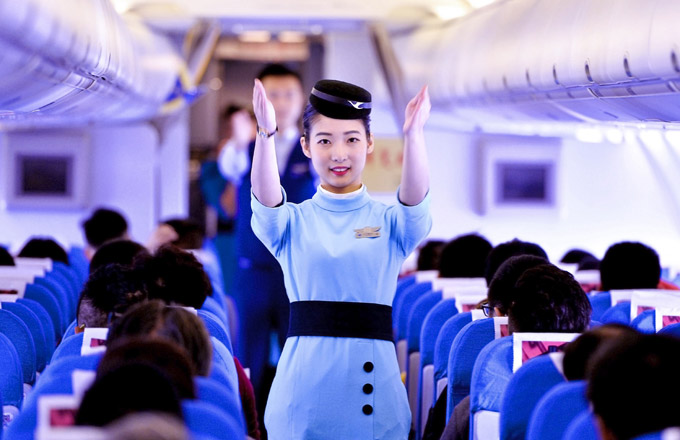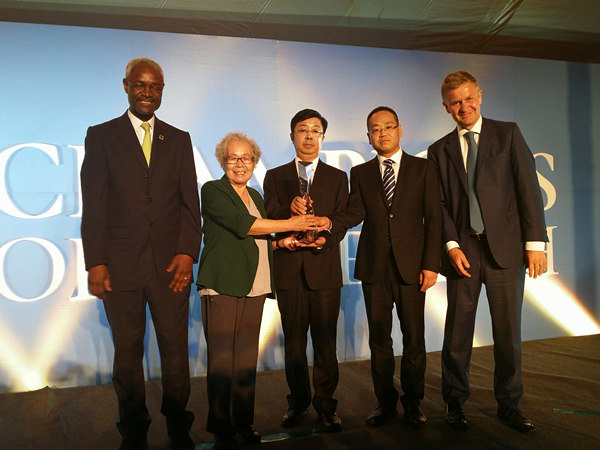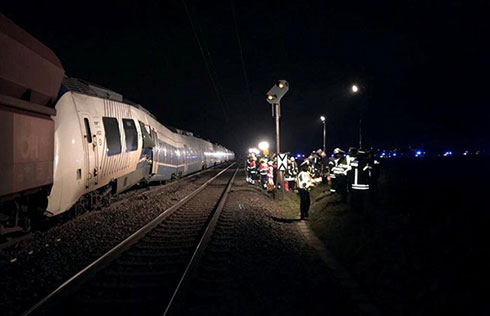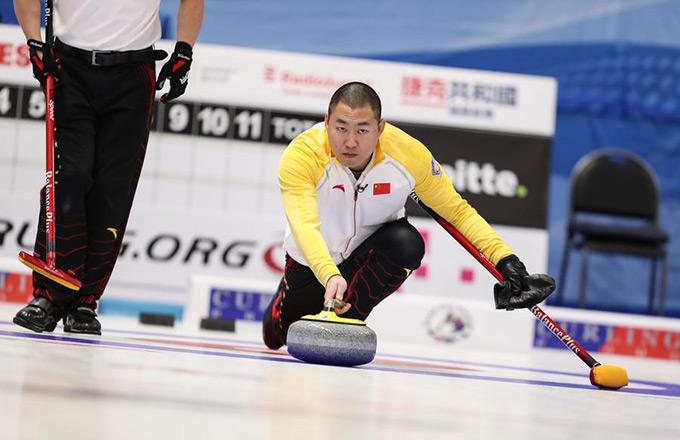

|
A man looks at LCD displays in Suzhou Industrial Park. (Inset): A bird's eye view of Suzhou Industrial Park. Asianewsphoto |
Suzhou Industrial Park (SIP) is a successful example of international cooperation that can serve as a model for other parts of China, Yang Zhiping, director of the park's administrative committee, told China Business Weekly.
SIP, which this year celebrates its 15th anniversary, is a joint project developed by the Chinese and Singaporean governments.
As China's modernization drive gained momentum in the late 1980s, the nation was eager to learn modern management methods, while Singapore was planning economic regionalization focusing on overseas investment.
After rounds of discussions and site surveys, the two governments decided to join forces to develop a modern industrial park by Jinji Lake in the eastern suburbs of Suzhou in East China's Jiangsu province. SIP was created on Feb 26, 1994 when the two governments signed the Agreement on the Joint Development of Suzhou Industrial Park.
"Celebrating the 15th birthday of the SIP, we are amazed at its fast growth because it has virtually become a new city and contributed enormously to the socioeconomic development of Suzhou," said Yang.
Holding a master's degree in automation control from Nanjing Aeronautical and Aerospace University, Yang has worked in different departments of SIP since the late 1990s, and became director of its administrative committee last April.
"I have witnessed the development of SIP and have been fascinated by all the changes happening here almost every day," Yang said.
The park now covers 80 sq km. Its total exports and imports have hit $50 billion, with its major economic indexes rising 40 percent annually, according to SIP figures.
"From the very beginning, the Singaporean model was strictly followed, which has proven to be crucial in the park's development,"said Yang.
An integral part of the SIP model is the well-planned location of factories, residential areas and infrastructure - the hallmarks of Singapore's renowned efficiency.
It is widely recognized that one of the important experiences SIP has garnered from Singapore is how to gain greater efficiency with a leaner administrative structure.
To provide good service for businesses in the park, a one-stop service center was set up soon after construction commenced, with 18 departments offering services previously provided by around 100.
"It was something new at the beginning and we had a lot to learn," said Sun Jingxia, the center's director.
"Our customers are now much more satisfied with our service. Our staff are always patient and efficient in their work. In addition, much of the work, such as that related to licenses and taxation, can be conducted electronically, which saves a great deal of time."
Over the past 15 years, more than 3,000 overseas firms and about 10,000 homegrown companies have invested in the park, most of them hailing from the hi-tech sector.
Statistics show that SIP has generated 68 billion yuan in gross domestic product (GDP), registering an annual average growth rate of 19 percent, helping to maintain Suzhou's status as one of China's top five cities for per capita GDP.
The financial crisis that started to sweep the globe last year has dealt a blow to many of the enterprises in SIP due to the major role played by exporters.
As a result, the park's economic growth has started to slow, with export-oriented enterprises being the hardest hit.
"But now, thanks to a number of stimulus measures we have taken, the worst effects of the recession have started to wear off," said Yang.
Figures show that starting from February, many enterprises increased their electricity and water consumption, and are once again recruiting new employees.
"The financial crisis was not entirely a bad thing, as we have learnt how to construct a rational industrial structure that is crisis-resistant," said Yang.
In its 15 years of development, SIP has witnessed the rapid growth of the IT industry, which has been one of the sector's hardest hit by the economic downturn. It accounts for about 60 percent of the total number of enterprises in the park.
To avoid over-reliance on IT, SIP has started to adjust its industrial structure.
To this end, it has provided favorable policies and opportunities for industries such as medicine, medical machinery, biochemistry, services and new energy.
Innovation hubs such as the 86-hectare BioBay, with an investment of 550 million yuan, have been set up, while companies such as biotech firm Suzhou GenePharma and microparticle manufacturer Nano-Micro Technology are making headway.
Doing well
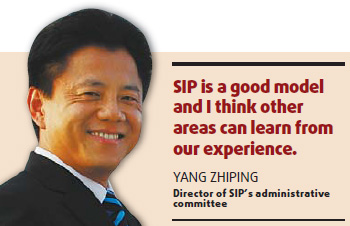
These firms are in fact doing well even at this time of crisis.
For example, GenePharma, which makes biotech products such as fluorescent dyes for the $300-million global gene industry at less than half the cost of foreign competitors, has a bulging order book.
"Another reason for the park's fast development is the rich human resources we have in SIP and Suzhou," Yang said.
About one-third of the people working at SIP have received a college education and many of them have master's or PhD degrees.
Suzhou boasts colleges and universities that have provided SIP with much of its personnel.
So far, nine universities have built new campuses there, plus a number of research institutes.
"With the growth of these educational and research institutes, it is expected that companies in SIP can find many of the personnel they need in Suzhou and SIP," said Yang.
There are over 12,000 foreigners working and living in SIP. Almost all of them have are impressed with the living and working conditions it has to offer.
"I have always felt at home since I came to work here three years ago, and I like the place very much," said Anders Christensen, a teacher from Denmark at the international kindergarten of Bayside Garden, a residential community in SIP.
"From the very beginning, planning of the residential areas was based on the Singaporean model in order to provide comfortable living conditions to attract people to work at SIP," said Yang.
Strolling around in any residential area in SIP feels like walking in a park with green trees, lawns and quiet roads.
To improve residents' quality of life, many clubs, libraries and other facilities have been established in the communities.
Courses are also offered for residents to learn traditional Chinese arts, such as calligraphy, painting and handicrafts.
"SIP is a good model and I think other areas can learn from our experience," said Yang.
In fact, SIP is trying to help Suqian, a city in northern Jiangsu province, to set up a development zone.
It also signed an agreement in November last year with Nantong, another city in Jiangsu, to jointly develop a 40-sq-km industrial park modeled on SIP.
Administrators are looking to further develop it into a modern industrial park with hi-tech and modern industries supported by a service sector and social amenities.
Looking to its future development, SIP will develop four model parks focusing on saving resources, R&D and hi-tech, logistics and virtual ports, and export-oriented outsourcing in China for multinational corporations.
With its focus on saving energy, emission-reduction and achieving an ecological balance, SIP has introduced a number of green projects with the goal of standardizing energy and water consumption to meet international standards.
"We have already made progress in the construction of the four parks, which will surely promote the development of SIP in the future by making it even more environmentally friendly," said Yang.
(China Daily 06/01/2009 page10)


